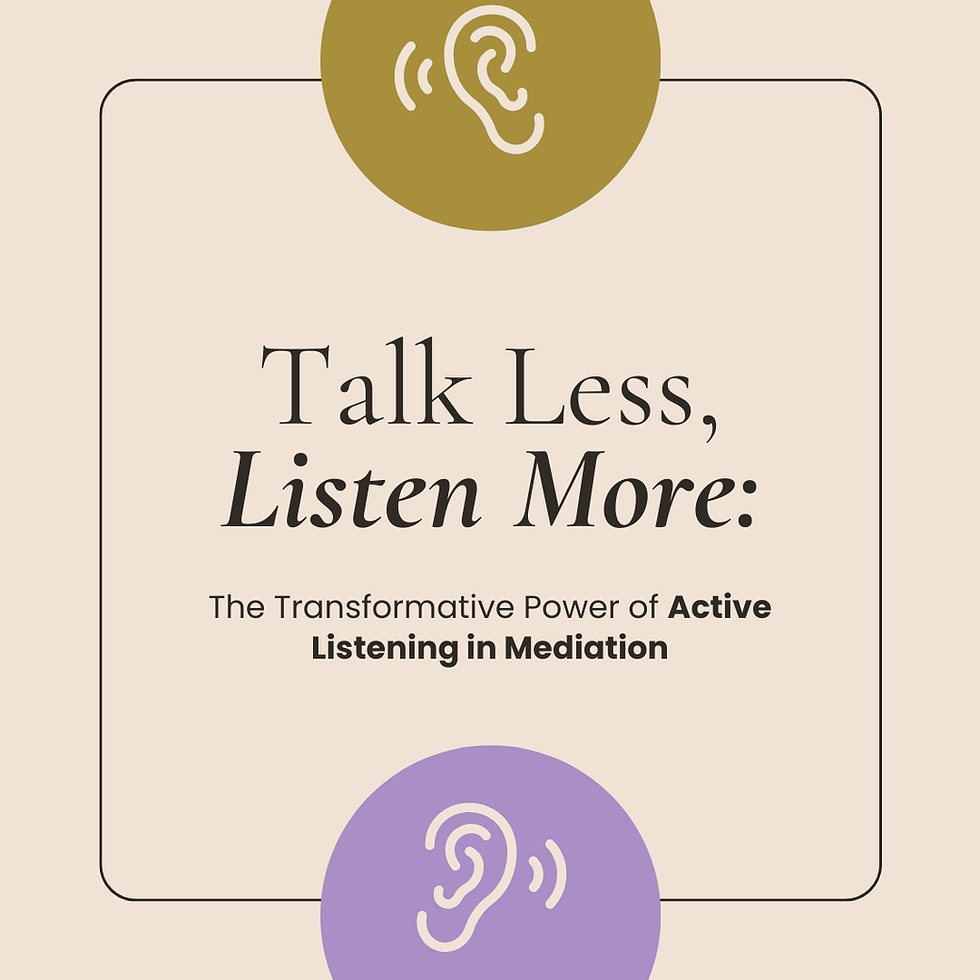Comfort in Conflict: How Small Touches Create a Big Impact in Mediation.
- Jana de Waal

- Apr 14
- 2 min read
TIPS FOR A MEDIATOR
Family law mediation isn’t easy. It often brings two people face-to-face at one of the most difficult points in their lives. Emotions are raw, trust may be fractured, and legal matters are deeply personal. While mediators are trained to guide the process, there’s something else that’s equally powerful—but often overlooked: comfort.
It may sound simple, even trivial—but creating a physically and emotionally comfortable environment can dramatically change the tone of a mediation session. Comfort builds calm. Calm fosters communication. And communication opens the door to resolution.
Let’s explore how small, thoughtful touches in in-person mediation settings can go a long way in helping parties reach equanimity—the “just right” mindset where real progress is possible.
Snacks and Beverages: Feeding the Brain and Easing the Nerves
We’ve all heard the word hangry—and for good reason. When people are hungry, their ability to think clearly and regulate emotion takes a nosedive. Light snacks help maintain blood sugar levels and prevent impulsive, emotionally charged decisions.
Foods like dark chocolate, bananas, or even a granola bar can support calm and focus. Beverages like coffee, tea, and water offer more than hydration—they signal welcome and care. Warm drinks in particular can reduce anxiety, and the simple act of being offered a refreshment sets a collaborative tone.
Kleenex Within Reach: A Small Gesture, A Big Message
Family law is emotional—there’s no getting around it. Whether discussing parenting arrangements, financial stress, or a painful betrayal, tears are common. Having tissues visibly and accessibly placed sends a subtle but powerful message: it’s okay to feel here. It shows the mediator is prepared to handle vulnerability with compassion.
Comfortable, Thoughtful Space Design
Physical comfort matters. No one can think clearly if they’re distracted by a hard chair or glaring fluorescent lights.
A good mediation space includes:
Comfortable seating for potentially long sessions.
Natural light where possible—or warm, adjustable lighting when not.
A clutter-free, calming environment with minimal distractions.
Neutral tones and layouts that avoid creating visual hierarchies or barriers.
The goal is to create a space that feels safe, neutral, and emotionally neutralizing.
Private Space for Each Party
Whether parties are amicable or not, each person needs the option of retreat—a place to regroup, consult with their lawyer, or process difficult emotions privately. Always ensure there are separate breakout rooms available, even if you’re not sure they’ll be used.
This isn't just for high-conflict cases. Even in cooperative mediations, parties benefit from space to reflect, breathe, and reset.
Accessibility is Non-Negotiable
Finally, ensure the venue is physically accessible to all participants. This includes considerations for mobility, restrooms, parking, and elevator access if needed. Accessibility is about respect. Everyone deserves to participate in the process without unnecessary stress or exclusion.
Comfort Creates Capacity
In family mediation, every small step toward comfort is a step away from conflict. By reducing physical discomfort and emotional anxiety, mediators help parties stay engaged and clear-headed—especially when the conversation gets hard.
It may seem minor, but these thoughtful touches help bring the room closer to a state of equanimity—that “just right” emotional balance where real problem-solving can happen.




Comments